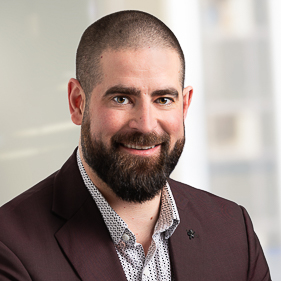May 15, 2025

"The only value of stock forecasters is to make fortune-tellers look good." These wise words from Warren Buffett highlight the futility of trying to time the market or predict where stock prices will go next.
Forecasting in the stock market should not be about betting on a future outcome, but being appropriately prepared for a range of outcomes. Forecasting in wealth management operates in the same fashion.

Wealth Advisor, Advising Representative at CC&L Private Capital, Tom Stachiw, explains,
“Imagine a tool that has the ability to show the possible outcomes in your wealth over the coming decades. Wealth management is part art, and part science. The science comes down to crunching the numbers and building an efficient portfolio that should get you to where you want to be. The art is often the more difficult side, taking into account the market volatility and the emotions associated with market fluctuations. A forecast based on a client’s unique circumstances can help to determine the suitability of their investments to their risk profile.”
A lens through which to view potential outcomes
At CC&L Private Capital, we make use of powerful proprietary financial modelling tools which provide a range of potential scenarios for what a client’s financial future could look like. By taking a client’s details — such as asset
type and value, income and tax bracket, current and projected expenses, and time till retirement — and combining this information with investment return data, we build a model that reflects more than just numbers: it offers a lens through which
to view what one’s financial future may hold.
By adjusting the parameters in these modelling tools, we can plan for different market conditions down the line, as well as those unanticipated life events, or weighty spending decisions, all of which can radically impact your wealth. Such insights offer
clients the necessary perspective to plan for milestones like a child’s university education or their own retirement. It also offers them the ability to make the necessary portfolio adjustments to ensure they stay on track with their financial
and investment goals, and maintain tax efficiency, without worrying about their future financial security.
Your vantage point impacts your perspective
In using such modelling tools, it’s critical to have an appropriate balance between the significance of historical market trends and the bearing of future market movements and insights. Starting from incorrect assumptions can render the models irrelevant.
As an example, utilizing the high-inflation, high-bond-yield, low-equity-valuations of the 1980’s in such a model would generate vastly different results as compared to using the low-inflation, low-bond-yield, high-equity-valuations of the current
financial landscape.
Consider, too, how the investment environment has changed over the past twenty years; from the greater volatility of today’s equity investments landscape, and the increased interconnectedness of global markets (making it more challenging to diversify
portfolio risk), to the relentless search for returns (beyond low-yield bonds and volatile equities), and the benefits of alternative assets (such as real estate and private equity assets). To have a sound perspective, you need an appropriate vantage
point from which to view where current trends are heading.
How the model works
Unlike most traditional investment plans which rely on straight-line return assumptions (i.e., 6% every year), our forecasts capture the dynamic nature of capital markets. We recognize that markets don’t perform linearly, and that return sequence
matters.
Our team analyzes the current market landscape and uses a building-block approach to create expected returns for different asset classes over an investor’s financial future. The final investment plan combines your unique financial situation with
many possible paths of return, providing a distribution of future outcomes ranging from subpar market conditions to superior ones.
We also pair the range of portfolio values with probabilities of success in meeting your stated goals. In this way, we help you to answer such weighty questions as: How soon can I afford to retire? How many years might my portfolio reasonably sustain
my lifestyle?
Stachiw adds, “The fact of the matter is that life changes and the unexpected happens. Through utilizing our forecasting model, we can provide further clarity to the possible outcomes throughout different stages of life.”
Do you want further peace of mind in your financial future?
At CC&L Private Capital, our expert wealth advisors understand the needs of our high-net-worth clients: the need to balance wealth preservation and intergenerational planning with helping them achieve their lifestyle goals and leave a legacy. Whether
it’s determining asset allocation or deciding how best to manage family wealth, a sound wealth forecast enables one to face the future more informed, and with greater peace of mind.